Pioneering - Ladders
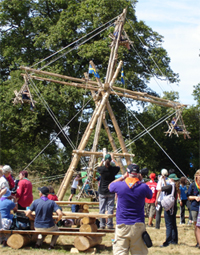
Downloadable Material
![]() A list of downloadable pioneering projects, including camp gadget flashcards
A list of downloadable pioneering projects, including camp gadget flashcards
Introduction
A ladder type construction can be used in many different situations. Its obvious use is to reach those 'high' places. However it can be useful in a variety of situations. One particular example of an important use is the Travois.
Knot Ladder
This basically a quick way to tie a simple rope ladder (as shown above). This involves making a long series of overhand knots to assist climbing. The best way to make these is as follows:
- Leave a long free end and make a half-hitch near the end of a log or branch.
- Continues making half-hitches (loose half hitches, do not tighten yet) along the length of the log. Note that the diameter of these half-hitches will determine the spacing of the knots. You may want to experiment to get your required spacing.
- Now pass the starting end back through all the loops and then carefully slide them off the end of the log.
- As each turn of the rope comes through the centre of the half-hitch it forms an overhand knot that should be tightened as you are going.
This will produce a long series of loops that can be used as hand-holds and foot-holds.
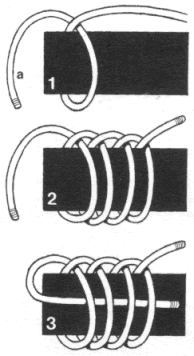
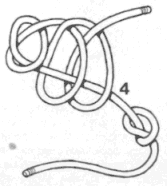
Pole Ladder
What I refer to as a 'pole' ladder is the more traditional type of ladder. This simply involves choosing two strong spars of the required length and attaching rungs at regular intervals using a square lashing.
One important thing to note is that the two main uprights are not parallel to each other. They should be angled inwards towards each other as you go to the top of the ladder. This will prevent the rungs from slipping downwards.
I suggest that you test the strength of each rung (and lashing) carefully before using the ladder.
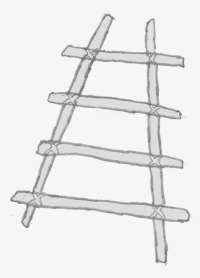
Rope Ladder
What I call a rope ladder can be made relatively quickly and easily. Simply take a sturdy length of rope and tie as many Manharness hitches in them as you require for hand holds and foot holds.
If you require a rope ladder that is more 'steady' then repeat as above with two equal lengths of rope. Place strong sticks through the loops (be sure to tighten the knots to hold the sticks). Note that you should allow the sticks to projects out from either end for safety.
It is recommended that you test the strength of the rung ladder (for each rung) before you actually use it.
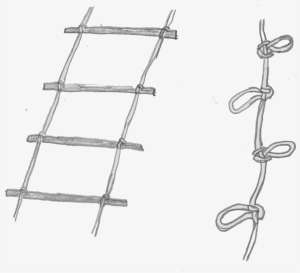
Travois
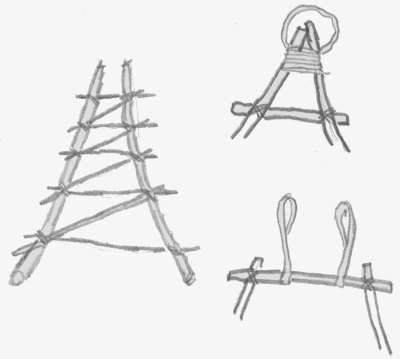
A travois is used for carrying loads. This could simply be your camping gear or food, perhaps some logs that you have cut. One important use is in carrying injured persons in first aid.
You simply pull the travois across the ground, where the two ends act like runners on a sled. Note that a travois is useless if the ground is rough or rocky. It needs a smooth surface to work efficiently.
Choose two boughs with some spring to them (this is important, a rigid bough is no good) and lash cross pieces as you would do for a 'pole' ladder.
I suggest that you add additional cross pieces to strengthen the structure and spread the load.
If you are pulling loads over a short distance, lash the runners to come to a single grip as in the top of the picture. For a larger version leave the last space clear or fit leather/fabric shoulder straps to haul it by as in the bottom of the picture.